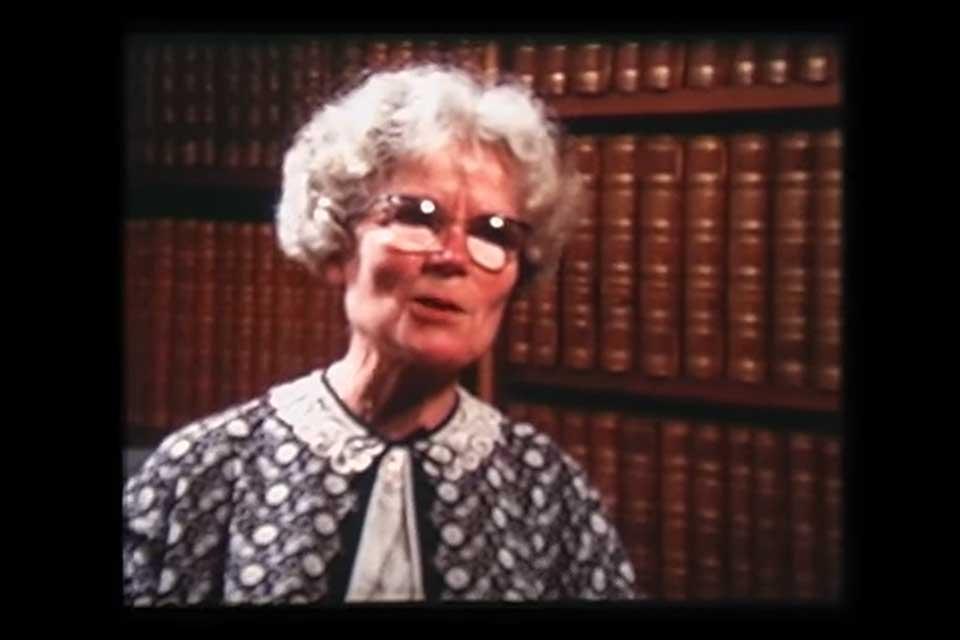Dame Kathleen Lonsdale was one of the first women to be elected Fellow of the Royal Society 80 years ago. Emeritus Professor Mike Glazer was one of her last PhD students and, along with Dame Jocelyn Bell Burnell, he features in a short documentary about Dame Lonsdale made by the Royal Society about her life and work. Here, Professor Glazer reflects on his time with Dame Lonsdale.
Dame Kathleen Lonsdale was a crystallographer at University College London and, as my supervisor, I had the privilege of working in her laboratory. I began my research with her in 1965 and obtained my PhD in 1968 working on the crystallography of mixed organic crystals. For the Royal Society documentary, we filmed in the very same laboratory where I had been a student some 60 years ago and, while it had of course changed, I stood on the exact spot where I was first interviewed by Kathleen for the graduate studentship.
Kathleen was a remarkable physicist. She had first been selected by William Henry Bragg (WHB) to join his research group, at a time when few women were made welcome in science laboratories. But WHB (and his son W L Bragg) were early pioneers in promoting the interests of female scientists. While working as a student of WHB she tackled a problem that had been bothering chemists for some time, namely was the benzene ring flat or puckered? Using X-ray diffraction photographs and considerable mathematical acumen she was able to show that the ring was flat, and it is this feature that lies at the heart of all aromatic chemistry. Given the very crude equipment that existed then and the fact that no computers existed, this discovery was phenomenal.
She also made many other scientific contributions. For instance, she showed how to measure the lattice parameters of diamond crystals using divergent-beam x-ray diffraction to incredible precision; I wrote a paper There ain’t nothing like a Dame: a commentary on Kathleen Lonsdale (1947) ‘Divergent beam x-ray diffraction’ (Phil. Trans. Roy. Soc. A 373, 20140232, by A.M. Glazer) on this very subject 10 years ago. Another important contribution was her work on deriving the 230 space group tables, of considerable importance for the solution of crystal structures.
As one of her research students, I had the benefit of learning the subject of crystallography in great detail, much of which is not taught today. In my first week at UCL she got me and a colleague to redo her hexamethyl benzene electron density map. When Kathleen did it she only had log tables and a slide rule, but we had the benefit of a later advance – the so-called Beevers-Lipson strips (the protototype box can be seen in the museum at the top of the Lindemann Building) which sped up the process before computers became available. Even so it took us a week to come out with something resembling her original map. Today this could be done in a fraction of a microsecond!
As her student, she required precision and hard work. We were left alone much of the time to work out our own research program, but every now and again we would be summoned upstairs to her office to explain what we were doing. She always started with the same question: where are the Laue photographs? And if you did not have them with you, you were in trouble! However, despite her strictness, she was in fact a very kind and supportive supervisor. When she was in University College Hospital in her final days, she took the trouble of writing a reference for me to be deposited at Cambridge University. I was able to use this when applying for my position in Oxford in 1976. I count myself highly privileged that my crystallographic mother was Kathleen Lonsdale.

